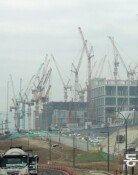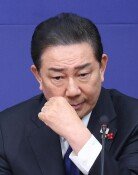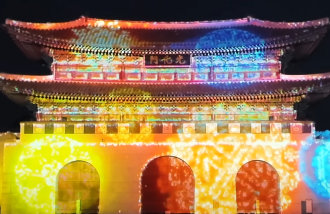[Op-Ed] Red, Yellow and Blue T-shirts in Thailand
[Op-Ed] Red, Yellow and Blue T-shirts in Thailand
Posted April. 14, 2009 11:15,
Protesters clad in red took to Thailands streets in support of former Prime Minister Thaksin Shinawatra. After disrupting the ASEAN Plus Three (Korea, China, Japan) Summit last weekend, they built outlets in many parts of Bangkok and demanded the resignation of incumbent Prime Minister Abhisit Vejjajiva to make way for Thaksins return. Before the power transition at the end of last year, anti-government protesters against then Prime Minister Thaksin wore yellow and occupied Bangkoks main airport until their demands were finally met.
Yellow symbolizes the monarch and king in Thailand. The Thai ruling party, which led last years protests, represents the interests of the monarch, army, elite bureaucrats, entrepreneurs and urban middle and upper class. The problem lies in that they do not trust people from rural areas and the lower-income class in the provinces. Their idea of new politics stands against the notion of one person, one vote since parliament should be run by appointed lawmakers. In other words, people from rural areas lack the intelligence and wisdom to cast a responsible vote. The last thing they want to see is Thaksins return on the back of a majority party selected by an unwise public.
While serving as prime minister between 2001 and 2006, Thaksin enabled economic growth of more than six percent a year through Thaksinomics. Thanks to his efforts, Thailand became the only Asian country to reduce the wealth gap between urban and rural areas by providing virtually free medical benefits, writing off debts, and supporting employment in rural areas. His populist policies and dictatorship-like rule inevitably angered the elites. Coincidentally, his corruption was discovered and the Thai king turned against him for disloyalty. In the end, Thaksin was ousted in a coup in September 2006. The problem is that many voters want Thaksin to return, and they took to the streets clad in red to have their demands met.
When Sejong Street in central Seoul turned into a venue for Koreans to protest U.S. beef imports last year, Newsweek said excessive democracy hurts national interests in an article titled One Mob, One Vote. It cited Korea and Thailand as examples of immature democracy whose people often resort to taking to the streets in the manner of protesting against dictatorships in the past. Fortunately, Koreans now shun violent protests and the democratic principle of one person, one vote still holds firm. This is not the situation in Thailand, however. As rumor has it, blue shirts (Thais who turn away from Thaksin in favor of the incumbent Thai administration) might occupy the streets once the red shirts go away. Though difficult for an outsider to decide which color is right, Thais should make such a decision at the polling booth, not on the streets.
Editorial Writer Kim Soon-deok (yuri@donga.com)







